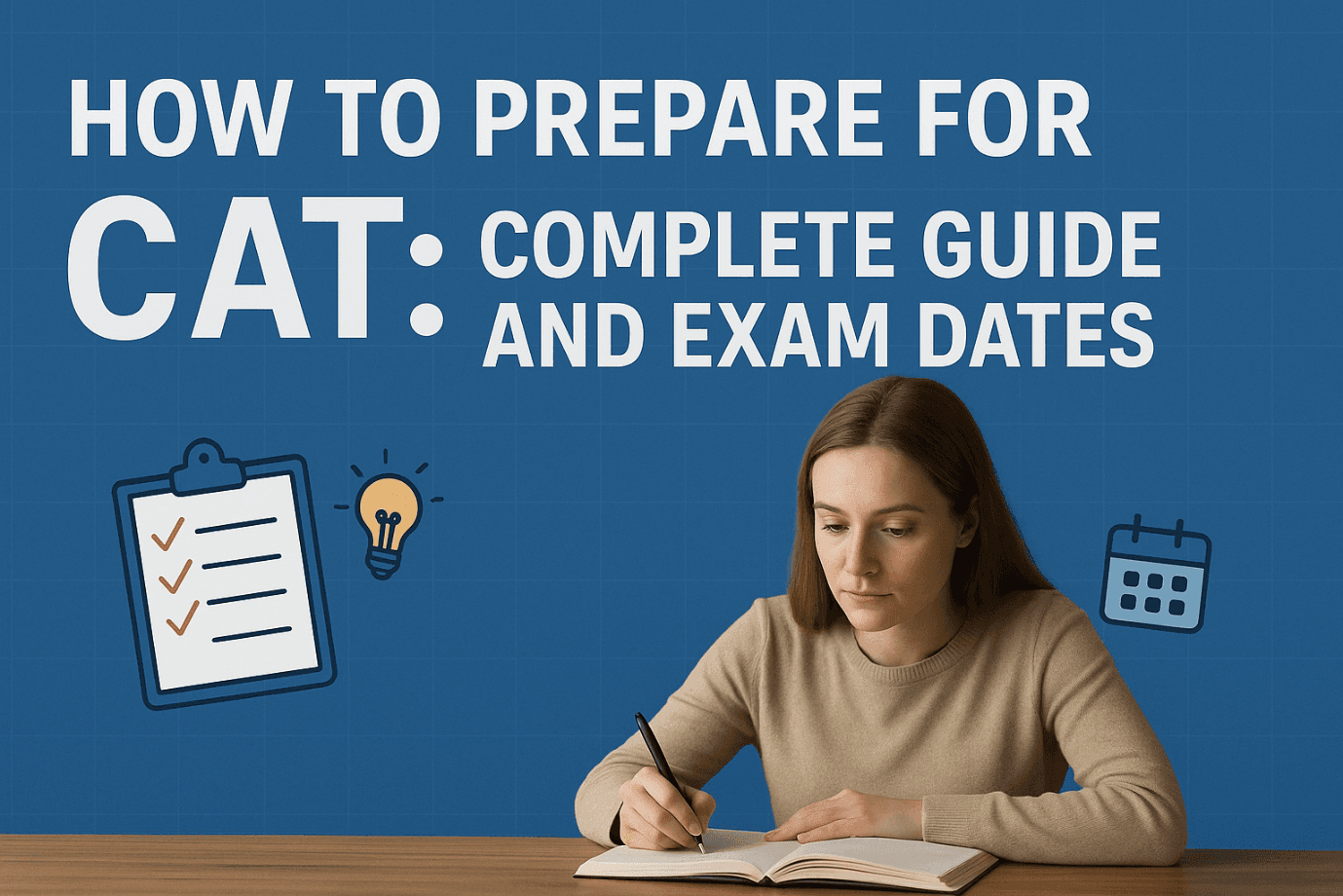How to Prepare for CAT: Complete Guide and Exam Dates
Oct 29th 2025
What is CAT and why it matters?
The Common Admission Test (CAT) is a highly competitive national-level cat entrance exam for admission to 21 IIMs, other elite business schools, and over 1,300 MBA colleges in India. This cat admission test is administered in computer-based format at specific locations throughout the country. With over 3 lakh people applying each year, competition is fierce. Quantitative aptitude, data interpretation, logical reasoning, verbal ability, and reading comprehension are all part of the cat exam syllabus, also known as the common admission test syllabus. The cat examination syllabus is fairly stable year after year, although hopefuls may refer to the updated cat syllabus 2025 to keep current. The cat test syllabus is crucial for cat exam preparation and helps candidates plan successfully. The exam is 120 minutes long, with 68 questions divided into three portions. The cat exam format comprises both MCQs and non-MCQs, while the cat marking scheme uses negative marking for incorrect answers.
Key dates for CAT
CAT notification date for 2025 and 2026
|
CAT Events |
Tentative Dates 2025 |
Tentative Dates 2026 |
|
CAT Notification |
27 July 2025 |
July Last Week (2026) |
|
CAT Registration Start Date |
01 August 2025 |
Starts in August 2026 |
|
CAT Registration Last Date |
13 September 2025 |
3rd or 4th Week of September 2026 |
|
CAT Admit Card Download |
05 Nov 2025 onwards |
Beginning of November 2026 |
|
CAT Exam |
30 November 2025 (Sunday) |
November 2026 |
|
CAT Result Announcement |
First week of January 2026 (tentative) |
Last week of December 2026 |
Exam pattern and syllabus
In order to improve their performance, candidates should start preparing for the test at least six to nine months in advance and take many practice exams. To improve practice, a lot of platforms additionally provide free CAT mock test options and series. Understanding the trends and degree of difficulty is aided by going over sample cat papers and solving previous year's or 2024 question papers. It's also very important to practice with last year's cat test paper and prior year's cat paper.
CAT Syllabus
|
Section |
Topics |
|
Verbal Ability and Reading Comprehension (VARC) |
Reading comprehension passages |
|
Para-jumbles, para-summary, odd sentence out | |
|
Vocabulary and grammar usage | |
|
Data Interpretation and Logical Reasoning (DILR) |
Data interpretation: tables, charts, graphs |
|
Logical reasoning: puzzles, seating arrangements, blood relations, syllogisms | |
|
Quantitative Aptitude (QA) |
Arithmetic: percentages, ratios, averages, profit & loss, time speed distance |
|
Algebra, Geometry & Mensuration, Number systems | |
|
Modern math: sets, probability, permutations & combinations, trigonometry |
CAT Exam Pattern
|
CAT Pattern Particulars |
Details |
|
Exam mode |
Computer Based Test |
|
Exam duration |
2 hours |
|
Sectional time limit |
40 minutes per section |
|
Number of sections |
3 – VARC, DILR, Quantitative Aptitude |
|
Number of questions |
66 |
|
Section wise questions |
VARC - 24 |
|
DILR - 22 | |
|
QA - 22 | |
|
Marking scheme |
+3 for every correct attempt |
|
-1 for every incorrect attempt | |
|
Total marks |
198 |
CAT Exam Eligibility Criteria
As, CAT is an entrance exam for postgraduate management programs, graduation is the minimum eligibility requirement. Check out the details below.
· The candidate must hold a bachelor's degree or equivalent from a recognized university. The minimum mark required is 50% (45% for SC/ST/PWD candidates).
· Candidates in their final year of a bachelor's degree program or awaiting results can also take the CAT exam.
· Candidates with professional degrees, such as CA/CS/CMA, are also eligible for CAT.
Frequently Asked Questions
1. How many months are enough for CAT preparation?
Ideally, 6–9 months of focused preparation is sufficient. However, consistent practice and mock test analysis are key to achieving a high percentile.
2. Is coaching necessary for CAT?
Not necessarily. Many toppers prepare through self-study using online resources, mock tests, and study materials. Coaching helps if you prefer structured guidance and peer learning.